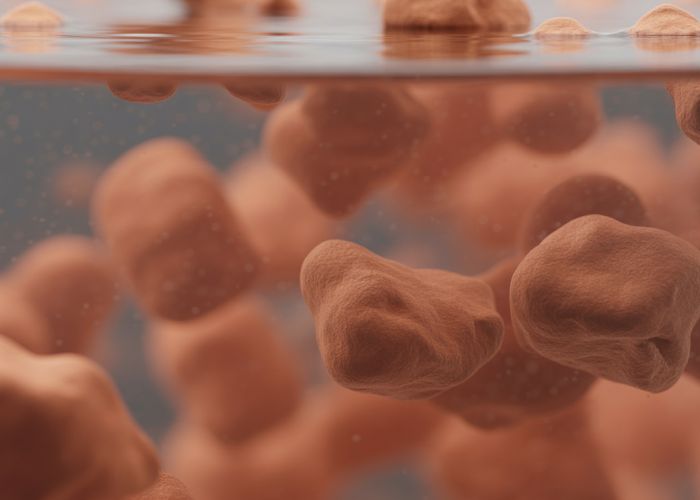Understanding suspension heterogeneous mixtures is crucial in various scientific fields. The Tyndall Effect, a phenomenon exhibited by these mixtures, provides a visual confirmation of their heterogeneous nature, separating them from true solutions. The stability of a suspension heterogeneous mixture is often influenced by factors like particle size and density, parameters meticulously studied in the context of Colloid Science. Applications range from the pharmaceutical industry, where suspensions ensure effective drug delivery, to environmental science, where sedimentation processes involving suspension heterogeneous mixtures play a key role. Researchers at institutions like the American Chemical Society actively investigate the behavior and properties of these mixtures to enhance their utilization and address challenges associated with their instability.

Understanding Suspension Heterogeneous Mixtures
This article provides a comprehensive overview of suspension heterogeneous mixtures, exploring their key characteristics, distinguishing features, and real-world applications. We will delve into the composition, stability, and separation techniques associated with these mixtures.
Defining Suspension Heterogeneous Mixtures
A suspension heterogeneous mixture is a type of mixture where solid particles are dispersed throughout a liquid medium but are not dissolved in it. These particles are large enough to be visible and will eventually settle out of the mixture if left undisturbed. This differentiates them from solutions, where the solute is completely dissolved.
- The key characteristic is the visible settling of particles.
- These mixtures exhibit non-uniform composition.
- Particle size is generally greater than 1 micrometer.
Distinguishing Suspensions from Other Mixtures
It’s important to differentiate suspensions from other types of mixtures, particularly solutions and colloids.
Suspensions vs. Solutions
Solutions are homogeneous mixtures, meaning the solute is evenly distributed and completely dissolved in the solvent. In contrast, suspensions are heterogeneous, and the solid particles remain distinct.
| Feature | Suspension | Solution |
|---|---|---|
| Homogeneity | Heterogeneous | Homogeneous |
| Particle Size | > 1 micrometer | < 1 nanometer |
| Settling | Particles settle over time | No settling occurs |
| Visibility | Particles visible to the naked eye or microscope | Particles not visible |
| Light Scattering | Exhibits the Tyndall effect | Generally does not exhibit the Tyndall effect |
Suspensions vs. Colloids
Colloids are also heterogeneous mixtures, but the particle size is smaller than in suspensions (between 1 and 1000 nanometers). While colloid particles may appear evenly distributed, they do not settle out like suspensions. Colloids often exhibit the Tyndall effect (scattering of light), similar to suspensions, but the settling behavior is the primary differentiating factor.
Stability and Factors Affecting It
The stability of a suspension refers to its resistance to particle settling. Several factors influence this stability:
- Particle Size: Smaller particles tend to remain suspended for longer periods.
- Density Difference: A smaller density difference between the solid particles and the liquid medium improves stability.
- Viscosity of the Liquid: Higher viscosity fluids slow down the settling process.
- Electrostatic Charge: Particles with similar charges repel each other, hindering aggregation and settling.
- Brownian Motion: Constant, random movement of particles due to collisions with molecules of the surrounding fluid; more significant for smaller particles, helping to keep them suspended.
Techniques for Separating Suspensions
Because suspensions are heterogeneous, they can be separated using relatively simple methods.
- Sedimentation: Allowing the particles to settle out naturally under the influence of gravity. This is the simplest method.
- Decantation: Carefully pouring off the liquid after the solid particles have settled.
- Filtration: Passing the mixture through a porous medium (e.g., filter paper) to trap the solid particles. The pore size of the filter is critical to capture the suspended particles.
- Centrifugation: Spinning the mixture at high speed to accelerate the settling process. This is often used when gravity-driven sedimentation is too slow.
Real-World Examples of Suspension Heterogeneous Mixtures
Suspension mixtures are prevalent in various aspects of our lives.
- Muddy Water: Soil particles suspended in water. The particles will eventually settle, leaving clearer water.
- Paint: Pigment particles suspended in a liquid binder. Agitation is often required to keep the pigment evenly distributed.
- Some Medications: Certain liquid medications require shaking before use to re-suspend the active ingredients.
- Blood: Red blood cells, white blood cells, and platelets suspended in plasma. Centrifugation is used to separate blood components.
- Concrete Mix: Cement, sand, and gravel suspended in water before setting.
FAQs About Suspension Heterogeneous Mixtures
Here are some frequently asked questions about suspension heterogeneous mixtures to help clarify your understanding.
What exactly is a suspension heterogeneous mixture?
A suspension heterogeneous mixture is a type of mixture where solid particles are dispersed throughout a liquid but are large enough that they will eventually settle out. These particles are visible to the naked eye.
How can I tell if something is a suspension?
The most straightforward way is to let it sit undisturbed. If the solid particles settle to the bottom over time, it’s likely a suspension heterogeneous mixture. You can also often see the particles floating within the liquid.
How does a suspension differ from a solution?
In a solution, the solute dissolves completely into the solvent, and you cannot see the individual particles. With a suspension heterogeneous mixture, the particles remain distinct and are large enough to be seen and eventually settle out.
Can a suspension be considered a colloid?
While there can be overlap, generally suspensions have larger particles than colloids. Colloids also have particles distributed evenly so they appear more uniform. In a suspension heterogeneous mixture, settling will eventually occur, a characteristic not typical for a colloid.
So, now you have a handle on what a suspension heterogeneous mixture is all about! Hopefully, this has given you a clearer picture. Feel free to revisit if you ever need a quick refresher on the topic!